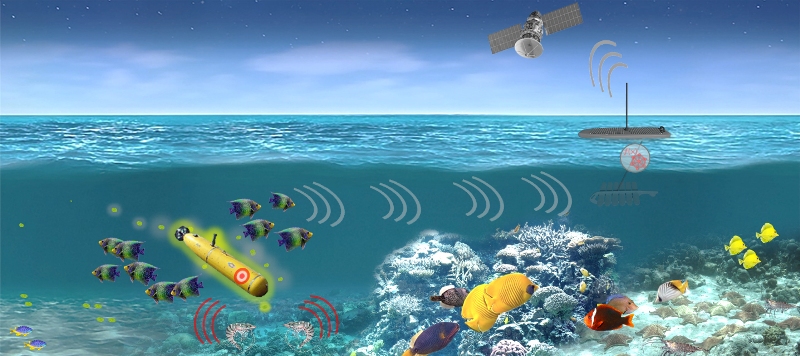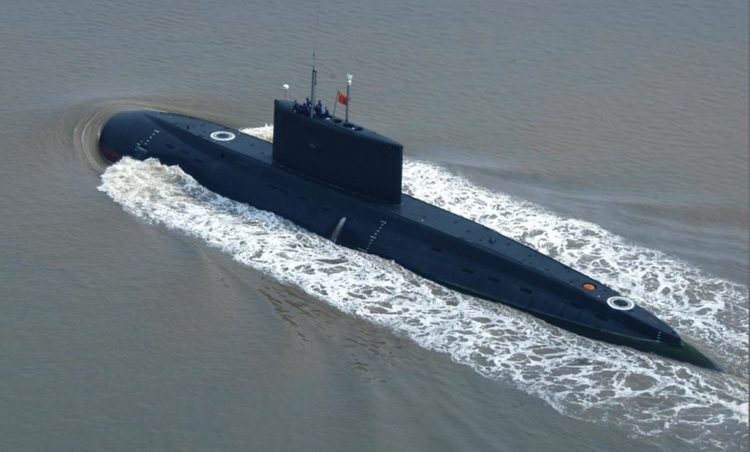In a 2017 interview with RT, a media organization so notorious for the use of propaganda that it has been forced to register in the United States as a Foreign Agent, a Russian Naval Officer described a military drill from the year prior, in which an unknown number of Akula-class Shchuka-B nuclear-powered attack submarines were ordered to take positions in the vicinity of a number of American military installations along the nation’s east coast. The drill is set to be the topic of an upcoming television series scheduled to air on Russia’s official military TV channel.
“This mission has been accomplished, the submarines showed up in the set location in the ocean and returned to base,” the commander of the submarine squadron, Sergey Starshinov, was quoted as saying. He went on to say that their objective throughout the drill was simply to come and go without being detected, stipulating that they came “close enough” to American shores but did not violate US maritime borders, remaining in international waters.
American territorial waters, for the most part, extend 12 nautical miles from the shore, so if the commander is to be taken at his word, the nuclear attack submarines would have come around that close to the U.S. shoreline. The United States has not issued a statement indicating whether or not they believe Russia’s claims to be true — doing so would be a lose-lose scenario in which they would either have to admit that they didn’t detect these submarines or they could potentially compromise their submarine detection apparatus by providing details if they did. However, shortly after the Russian account of this mission became international news, the U.S. Navy decided to stand up its recently defunct 2nd Fleet with the specific role of defending America’s Atlantic interests — like defending the coastline from Russian attack. In a way, that can be seen as a response in itself.
Russia has placed a heavy emphasis on its nuclear submarine forces in recent years, allocating funding away from surface combatants like their long-troubled Admiral Kuznetsov aircraft carrier in favor of powerful new submarines like the Belgorod. The Russian navy is, of course, no stranger to conducting operations deep beneath the ocean’s surface, as nuclear-armed submarines became a staple of both American and Soviet defenses during the Cold War, but recent developments in Russian weapons programs, like the potentially 100-megaton nuclear “doomsday” submersible drone the Poseidon, have reinvigorated concerns about how best to counter threats hidden beneath the waves. Likewise, as China’s Navy continues to grow (and rumors of their near-silent submarine propulsion systems persist), concerns about Chinese submarines threatening American interests at home and abroad are now becoming prominent as well.
It seems clear then that the United States needs to develop a robust system of submarine detection technologies, and one such technology is DARPA’s Persistent Aquatic Living Sensors (PALS) program, which hopes to detect encroaching submarines by leveraging the senses of marine life near American shores.
The U.S. Navy’s current approach to detecting and monitoring underwater vehicles is hardware-centric and resource intensive. As a result, the capability is mostly used at the tactical level to protect high-value assets like aircraft carriers, and less so at the broader strategic level,” PALS Project Manager Lori Adornato said in a DARPA press release.
Advertisement“If we can tap into the innate sensing capabilities of living organisms that are ubiquitous in the oceans, we can extend our ability to track adversary activity and do so discreetly, on a persistent basis, and with enough precision to characterize the size and type of adversary vehicles.”
The PALS program aims to incorporate a wide variety of undersea life to aid a series of submerged and floating sensor nodes designed specifically to have a minimal effect on the ocean’s ecosystem while offering the Department of Defense the ability to locate encroaching Naval assets. In order to do this, the project relies on a system that can track the activity of a variety of marine animals, including the sounds they produce and their traffic patterns. By studying the behavior of the animals and establishing an understanding of how they respond to different stimuli, an algorithm can be developed that identifies sudden shifts in animal behavior that may indicate the presence of an enemy submarine or vessel.
The system will use the loud, impulsive sounds produced by snapping shrimp as sources of opportunity in a multi-static sonar system – detecting reflections of those sounds off of the underwater vehicle,” Raytheon principal investigator on the PALS programme Alison Laferriere told Naval Technology.
Advertisement“To enhance performance and versatility, the system will also listen to the underwater soundscape (i.e. the sounds produced by all animals in the environment), utilising machine learning algorithms to detect changes in these sounds caused by the intrusion of an underwater vehicle.

This would mean that DARPA wouldn’t have to resort to modifying any animals, or even training them — an effort that has historically proven expensive, arduous, and faces a number of issues like animal cruelty concerns and the fiscal loss represented by animals aging out of use or dying. The PALS plan, on the other hand, would track natural wildlife behaviors, rather than attempting to develop new ones.
Our ideal scenario for PALS is to leverage a wide range of native marine organisms, with no need to train, house, or modify them in any way, which would open up this type of sensing to many locations,” Adornato said.
She went on to explain the value offered by leveraging the natural senses of aquatic wildlife, which often extend beyond sight, sound, and touch, and include the ability to detect subtle electro-magnetic and chemical changes in the water around them.
The PALS program, then, likely wouldn’t serve as the most potent form of sub-detection the Defense Department has at its disposal, but this approach could ultimately prove incredibly valuable to the nation’s defense. As submarine propulsion systems get quieter and advanced technologies make detection even more difficult, the best way to spot a 100-megaton nuke drone cruising into our harbors may be to let the fish find it for us. After all, it works for Aquaman.










COMMENTS
You must become a subscriber or login to view or post comments on this article.